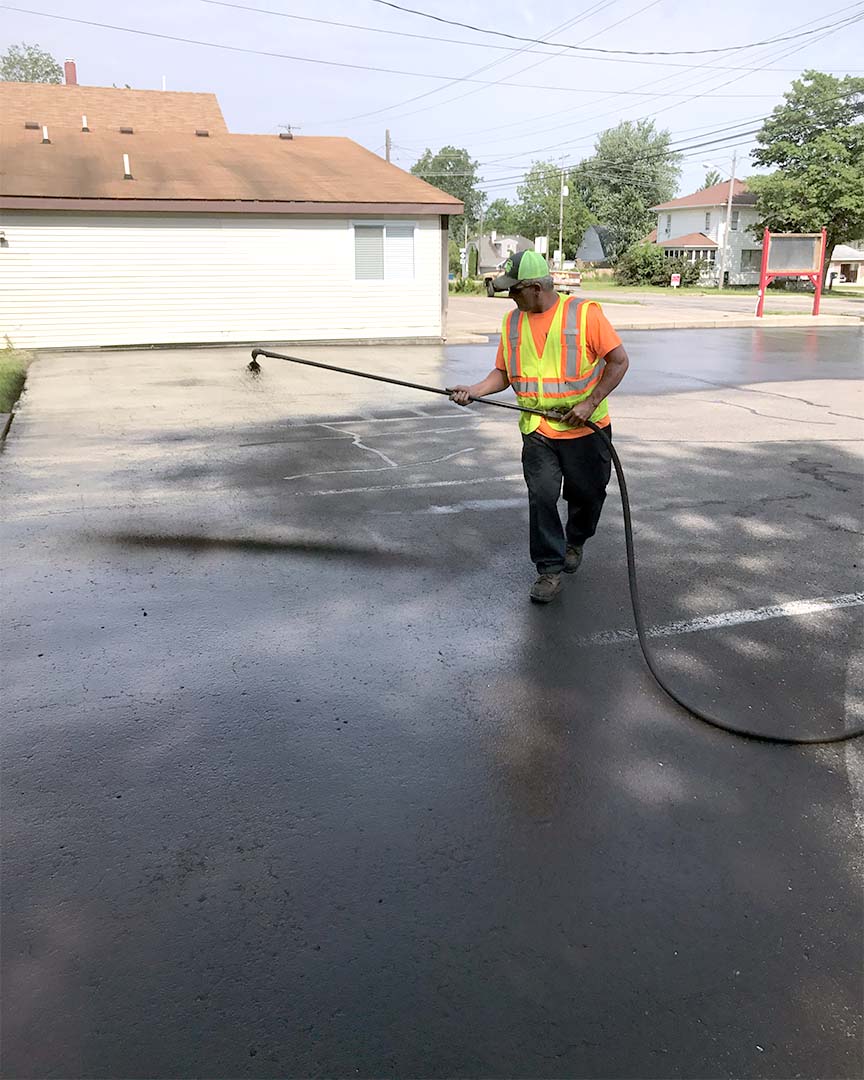Hot Mix Asphalt: A Sustainable Service for Pavement
Hot Mix Asphalt (HMA) has actually emerged as a leading lasting option for pavement options, providing a myriad of ingenious technologies and ecological benefits. As the need for environmentally friendly building and construction methods expands, checking out the subtleties of HMA's sustainability can offer valuable insights right into the future of pavement options.
Environmental Advantages of Warm Mix Asphalt

Furthermore, Warm Mix Asphalt helps to alleviate urban warm island results. Its dark color soaks up sunlight, minimizing the quantity of heat mirrored back into the environment contrasted to lighter-colored pavements. This can decrease ambient temperatures in metropolitan locations, decreasing the need for air conditioning and eventually lowering energy usage.
On top of that, Hot Mix Asphalt adds to boosted stormwater monitoring. Its porous nature allows water to infiltrate the pavement and charge groundwater products, lowering drainage and the risk of flooding. These environmental benefits make Hot Mix Asphalt a sustainable choice for paving roads and highways.
Power Performance in HMA Production
Is power performance a vital consider the production of Hot Mix Asphalt (HMA)? Absolutely. Power plays a significant role in the production of HMA, impacting both cost and ecological sustainability. One vital facet of power performance in HMA manufacturing is using warm mix asphalt (WMA) technologies (angled parking). WMA permits the blending and positioning of asphalt at reduced temperatures compared to standard warm mix asphalt, resulting in lowered power intake throughout manufacturing. This process not only lowers gas usage but additionally decreases greenhouse gas discharges, making it a much more eco-friendly alternative.
In addition, improvements in plant technologies have actually resulted in even more energy-efficient HMA production procedures. Modern plants are created with features like recycled asphalt sidewalk (RAP) processing capacities, efficient heater systems, and improved insulation, all adding to energy financial savings. By maximizing energy use in HMA production, the market can reduce its carbon impact while maintaining top notch pavement materials. Power efficiency is, consequently, an important factor to consider in making sure the sustainability of Warm Mix Asphalt manufacturing.
Recyclability of Warm Mix Asphalt
The recyclability of Hot Mix Asphalt (HMA) is a critical element of its sustainability and lasting environmental impact. HMA is among one of the most recycled products in the United States, with over 100 million tons of recovered asphalt pavement (RAP) being reused annually in new sidewalk Recommended Reading building and construction. Reusing HMA offers a number of environmental advantages, such as lowering the demand for virgin materials, reducing power intake throughout production, and decreasing the amount of waste sent to landfills.
The process of recycling HMA includes grating the existing pavement, crushing it into smaller pieces, and mixing it with new aggregate and asphalt binder to create a recycled mix. This recycled mix can typically do in addition to or also much better than traditional HMA, while needing fewer raw materials and creating lower greenhouse gas emissions. By incorporating RAP into brand-new sidewalk tasks, roadway companies can conserve natural resources, lower prices, and decrease the ecological footprint of road construction and visit the website upkeep tasks. Generally, the recyclability of HMA plays a considerable function in promoting sustainable methods within the pavement industry.

Long-Term Performance of HMA
Asphalt sidewalks show toughness and resilience over an extensive duration, showing the lasting efficiency of Hot Mix Asphalt (HMA) In addition, improvements in HMA technology, such as the use of polymer-modified binders and cozy mix asphalt, have actually additionally enhanced the sturdiness and long life of HMA pavements. By focusing on top quality building and upkeep methods, HMA proceeds to prove itself as a cost-effective and sustainable remedy for long-lasting pavement framework.

HMA: Longevity and Sustainability
Showing both resilience and sustainability, Warm Mix Asphalt (HMA) has come to be a foundation in the construction of resilient pavement frameworks - angled parking. HMA's longevity comes from its capacity to endure hefty loads, rough weather, and high traffic volumes, making it a reliable option for highways, highways, and flight terminal paths. The composition of HMA, which official site commonly includes aggregates, binder, and filler, plays a crucial function in boosting its long life and resistance to use and tear
Moreover, HMA's sustainability hinges on its recyclability and energy-efficient manufacturing procedure. The ability to reuse recovered asphalt sidewalk (RAP) in brand-new HMA mixtures decreases the need for virgin products and decreases the environmental effect of pavement building and construction and upkeep. Additionally, the energy effectiveness of creating HMA depends on its lower blending temperature levels contrasted to various other sidewalk materials, leading to decreased energy usage and greenhouse gas exhausts.
Verdict
In final thought, hot mix asphalt (HMA) provides a sustainable option for pavement with its eco-friendly attributes. HMA's recyclability, energy effectiveness in production, and long-lasting sturdiness make it a green selection for road building. By conserving all-natural resources, reducing waste, and decreasing greenhouse gas emissions, HMA plays an essential role in promoting sustainability in infrastructure growth. Its capacity to alleviate metropolitan warm island effects further emphasizes its relevance in producing eco mindful and durable pavement systems.
HMA is one of the most recycled materials in the United States, with over 100 million loads of redeemed asphalt pavement (RAP) being recycled every year in new sidewalk construction.The procedure of recycling HMA entails grating the existing sidewalk, crushing it right into smaller sized pieces, and blending it with new accumulation and asphalt binder to create a recycled mix.Asphalt sidewalks demonstrate toughness and resilience over an extensive period, showing the long-term efficiency of Warm Mix Asphalt (HMA) Additionally, innovations in HMA innovation, such as the usage of polymer-modified binders and warm mix asphalt, have better enhanced the longevity and longevity of HMA sidewalks. The capacity to reuse recovered asphalt sidewalk (RAP) in new HMA mixes decreases the need for virgin products and reduces the ecological influence of pavement building and upkeep.